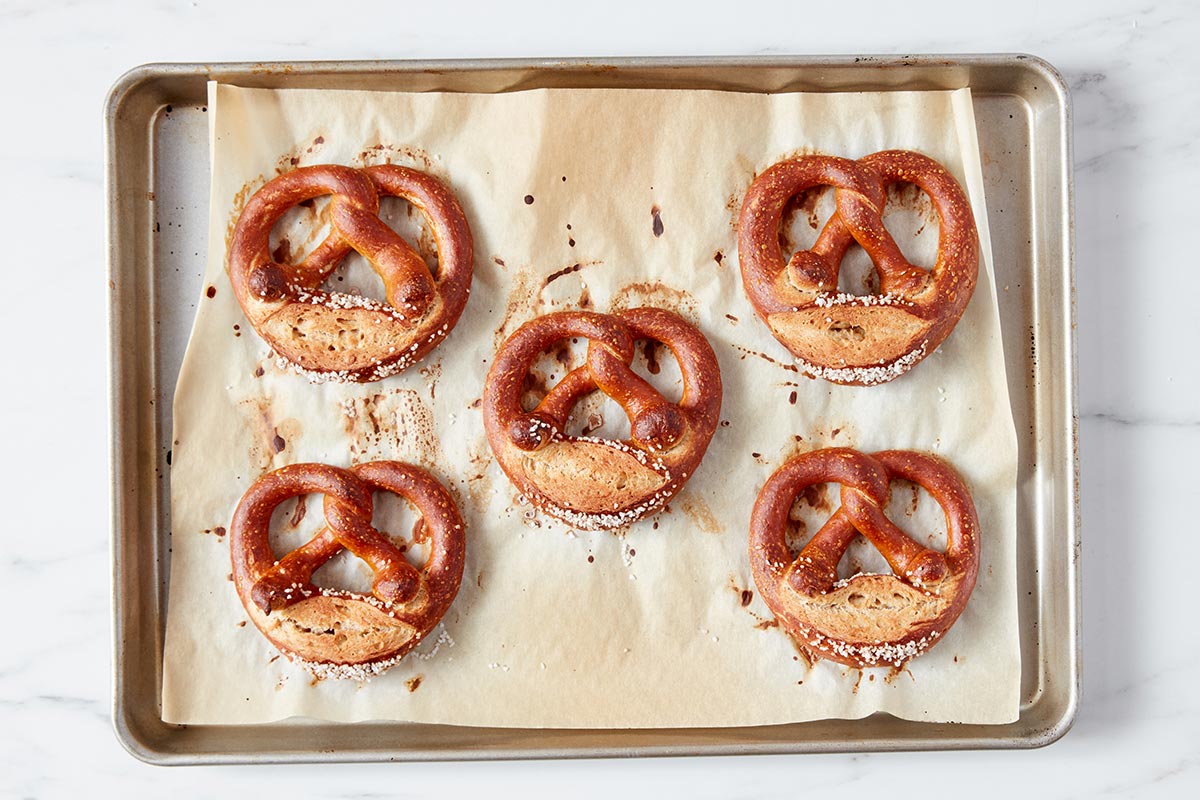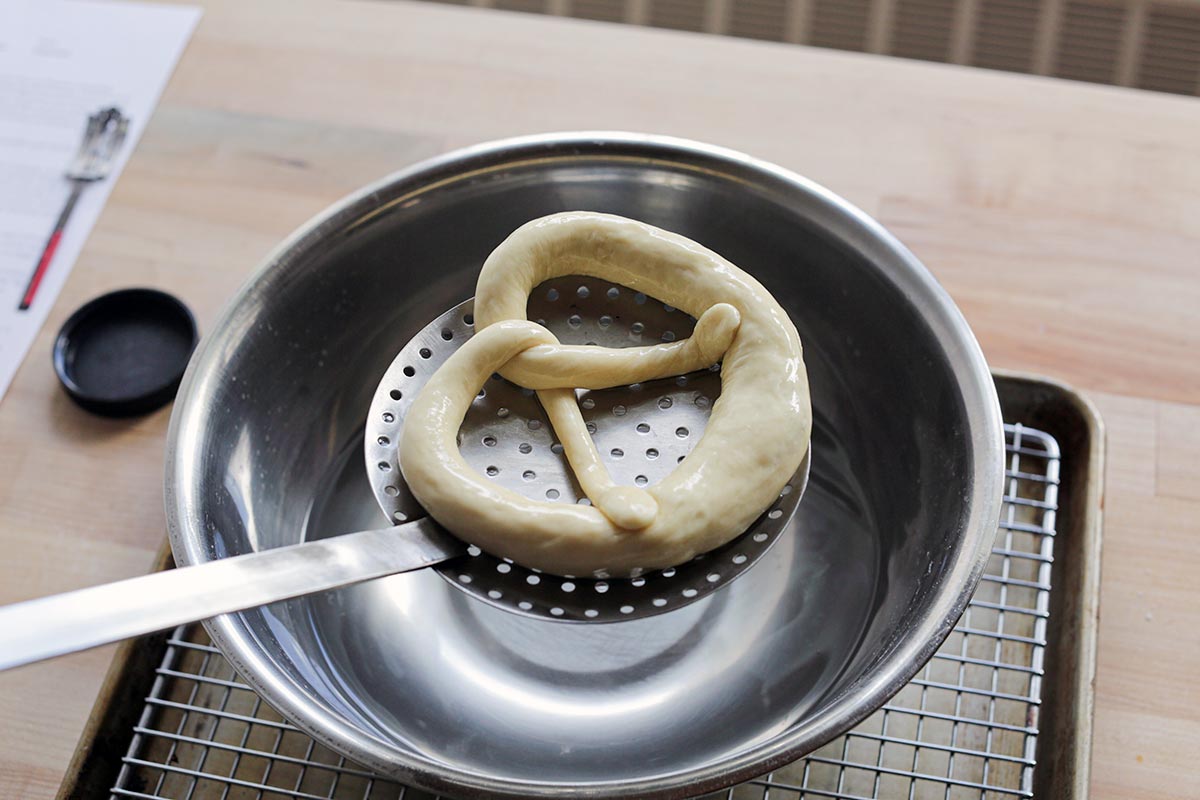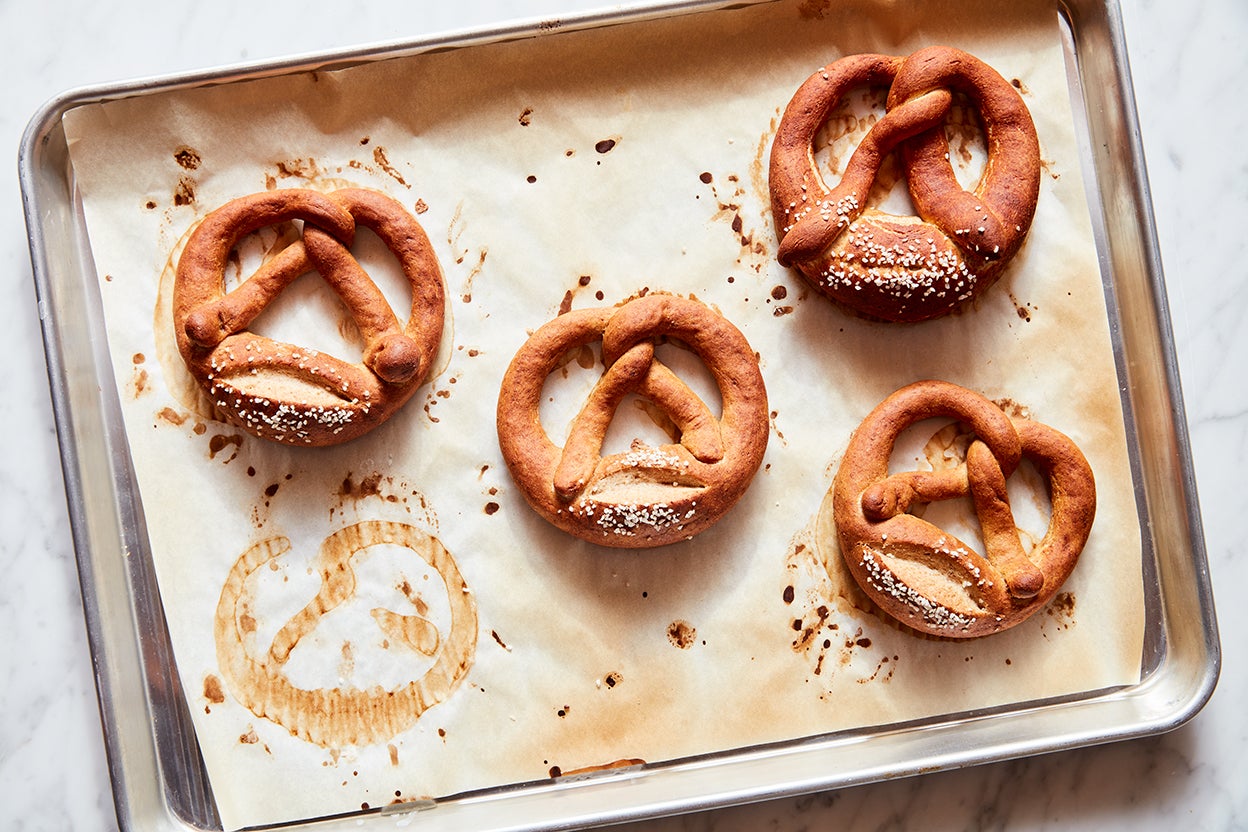A baker’s tips for safely working with lye
A serious (but ultimately delicious) baking method


Lye isn't used frequently in baking, but when it does show up in a recipe, it must be approached carefully. Lye can be dangerous to work with if you're not exercising caution; at the same time, it's essential for achieving the distinct taste and texture of classic pretzels and pretzel-style buns. Ultimately, it's a good staple for serious bakers to have in their arsenal of skills.
To help with your baking, we’ve put together an introduction to the world of lye and some tips for using it safely. We encourage you to treat this resource as what it is — a starting point — and continue to conduct additional research by consulting reputable sources for more information on safely using lye in your kitchen.
Lye — also known as sodium hydroxide — is an alkaline compound used in everything from manufacturing (cleaning supplies, dyes, aluminum, paper) to food production (pretzels, cured fish, olives, hominy). With proper handling, it can be safely used in a home kitchen with delicious, impactful results that you can’t really achieve with other baking methods.

According to the Centers for Disease Control and Prevention, sodium hydroxide is strongly irritating and corrosive. Sodium hydroxide produces an exothermic (read: hot!) reaction when combined with water. When improperly handled, it can cause severe burns and damage upon contact with skin or eyes. Inhaled sodium hydroxide can also cause internal damage, as can ingesting lye that hasn’t been neutralized during baking.
While lye can be dangerous if mishandled, proper usage greatly reduces associated risks — just like an oven, a cook top, a grill, a sharp knife, common household chemicals, and other everyday kitchen tools.
Lye is primarily used to make pretzels, and it’s the reason for their unmistakable shiny, mahogany color. To prepare, shaped pretzels are dipped in a lye bath, then baked in the oven. This method can also be used with rolls or buns. Once lye-dipped pretzels are baked, they're totally safe (and delicious!) to eat.

The most important aspect of baking with lye is that it’s diluted, which greatly reduces (but doesn’t eliminate) the risk of harm. Doughs are typically dipped in a solution made up of 3% to 4% (by weight) lye-to-water before baking.
In addition, bakers use food-grade lye, which is a higher grade lye with fewer impurities than technical grade sodium hydroxide. The standards for food-grade lye must meet guidelines set by the FDA, ensuring it's safe to use as directed with food.
1) Start with food-grade lye
This one may seem obvious, but it's worth stating: Make sure you're using food-grade lye every time you bake. You can easily find it available to purchase from online sources; check for product labeling marking it as "food-grade."
2) Use proper safety gear
To handle lye, you need to wear plastic or rubber gloves, eye protection such as goggles, clothing that protects your skin from splashes or spills, and closed-toed shoes. The goal is to prevent any contact with your skin or eyes.

3) Work in a well-ventilated space
It’s best to work in a room with good airflow and not a small, confined space in order to reduce the risk of inhaling concentrated lye fumes.
4) Use the correct equipment
You must use a non-reactive bowl, such as stainless steel or glass, when dealing with lye. In addition to the containers you use, make sure to have some rags on hand in case of a spill.

5) Protect your surfaces
Lye may discolor wooden work surfaces (or some other surfaces, such as marble) if it comes in contact with them, so it’s good practice to put down a plastic sheet to protect your work surfaces before you start baking.
6) Practice thorough cleanup and disposal
After you’re done baking, wipe your work surface with an acid such as vinegar to neutralize any lye that might have inadvertently come in contact. If you spill lye at any point while baking, wipe it up immediately rather than waiting until you’re done to start cleaning up.
To dispose of your already-diluted lye solution, pour it directly down the drain, then follow with a few seconds of cold water from the sink faucet. If you’d like, you can neutralize the solution by stirring in vinegar or another acid before disposing, but this step isn’t necessary.
7) Work in pairs
Until you’re comfortable working with lye, consider working with someone who can help with the process. It’s always helpful to have an extra set of hands, and if something should happen, you’ll have a buddy on hand to assist with cleanup or other necessary steps.
If this all seems like too much, we have plenty of options for boiled or baking soda-dipped versions of baked goods traditionally made with lye. Try recipes like Classic Pretzels and Stuffed Rye Pretzel Buns. If you use baking soda instead of lye, you won't get the same glistening, deep brown sheen on your pretzels and baked goods, but they'll still be delicious all the same.

Despite the serious nature of lye, it can be perfectly safe to bake with as long as you take the proper precautions. Prepare thoroughly, follow the tips above, then try your hand making German-Style Pretzels or Pretzel Sandwich Buns.
And for more details on baking pretzels — using either lye or baking soda — see our previous post, Making pretzels at home.
Cover photo by Kristin Teig

